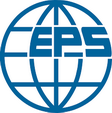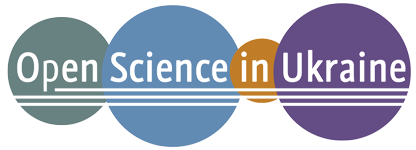Synthesis of components for composite material of electrical contacts with unique properties for high-current electrical apparatus with arc-free switching
DOI:
https://doi.org/10.15330/pcss.25.4.816-824Keywords:
high-current apparatus, electrical contacts, arc-free switching, composite material, porosity, metallographic analysis, computer tomography, infiltrationAbstract
Experimental research has determined the optimal composition of components for a composite material used in electrical contacts with unique properties designed for high-current electrical apparatus that perform switching without arc formation. This article presents the results of a study on the porosity of copper obtained by the powder metallurgy method. To analyze the porosity of copper, methods for studying porous structures on both the surface and within the sample were examined. The metallographic method and the method of computed tomography were selected as the most suitable and informative. The conducted studies of the porous material revealed differences in material structure and porosity depending on various manufacturing conditions: temperature, process duration, and ingredient proportions. This, in turn, allowed for the identification of technological parameters for obtaining porous copper with up to 65% porosity, enabling its use as a matrix of the conductive material with a higher melting temperature. The optimal method for infiltrating copper samples with a low-melting material (fusible component) was selected.
References
A. Chen, B. Li, C. Zhang, Innovative design of porous materials for advanced thermal management, Sustainable Materials and Technologies, 36, 110562 (2024); https://doi.org/10.1016/j.mtcomm.2024.110562.
S.Y. Tarasov, A.A. Kudryavtsev, Microstructure and Properties of Composite Materials in High-Current Electrical Contacts, Materials Today: Proceedings, 4(3), 2820 (2017); https://doi.org/10.1016/j.matpr.2017.02.160.
Y. Cao, X. Jiang, Powder Metallurgy Processing of Copper and Copper-Based Materials, Materials Science Forum, 959, 17 (2019); https://doi.org/10.4028/www.scientific.net/MSF.959.17.
F. Wan, T.J. Pirzada, R. Liu, Y. Wang, C. Zhang, & T.J. Marrow, Microstructure Characterization by X-Ray Computed Tomograp hy of C/C-SiC Ceramic Composites Fabricated with Different Carbon Fiber Architectures, Applied Composite Materials, 26, 1247; https://doi.org/10.1007/s10443-019-09778-2.
T.М. Mazur, М.М. Slyotov, М.Р. Mazur, V.V. Prokopiv, O.I. Kinzerska, O.M. Slyotov, Features of the cadmium chalcogenide substrates with surface nanostructure, Materials Today: Proceedings, 35 (4), 661 (2019); https://doi.org/10.1016/j.matpr.2019.12.112.
S. Khademzadeh, S. Carmignato, N. Parvin, F. Zanini, P. F. Bariani, Micro porosity analysis in additive manufactured NiTi parts using micro computed tomography and electron microscopy, Materials and Design, 90, 745 (2016); https://doi.org/10.1016/j.matdes.2015.10.161.
M.М. Slyotov, T.М. Mazur, V.V. Prokopiv, O.М. Slyotov, M.Р. Mazur, Sources of optical radiation based on ZnTe/ZnSe/ZnS heterostructures, Materials Today: Proceedings, 62, 5763, (2022); https://doi.org/10.1016/j.matpr.2022.03.476.
S. Hong, J. Kim, The Role of Sintering Additives in the Sintering of Copper and Its Alloys, Acta Materialia, 54(2), 301 (2006); https://doi.org/10.1016/j.actamat.2005.09.015.
R. Cavuoto, P. Lenarda, A. Tampieri, D. Bigoni, & M. Paggi, Phase-field modelling of failure in ceramics with multiscale porosity. Materials & Design, 238, 112708 (2024); https://doi.org/10.1016/j.matdes.2024.112708.
J. Čapek, D. Vojtěch, Properties of porous magnesium prepared by powder metallurgy, Materials Science and Engineering C, 33(1), 564 (2013); https://doi.org/10.1016/j.msec.2012.10.002.
N.T. Aboulkhair, N.M. Everitt, I. Ashcroft, C. Tuck, Reducing porosity in AlSi10Mg parts processed by selective laser melting, Additive Manufacturing, 1(4), 77 (2014); https://doi.org/10.1016/j.addma.2014.08.001.
M. Elangovan, S. Gowri, N. Velmurugan, Investigating the morphology, hardness, and porosity of copper filters produced via hydraulic pressing, Journal of Materials Research and Technology, 19, 208 (2022); https://doi.org/10.1016/j.jmrt.2022.05.012.
Т.M. Mazur, V.V. Prokopiv, M.M. Slyotov, M.P. Mazur, O.V. Kinzerska, O.M Slyotov, Optical properties of CdTe doped Ca, Physics and chemistry of solid state, 21(1), 52 (2020); https://doi.org/10.15330/pcss.21.1.52-56.
V. S. Seesala, R. Rajasekaran, A. Dutta, P. V. Vaidya, S. Dhara, Dense-porous multilayer ceramics by green shaping and salt leaching, Open Ceramics, 5, 100084 (2021); https://doi.org/10.1016/j.oceram.2021.100084.
A. Hedayati, M. Heshmati, H. Faghih Shojaei, M. Salimi, Optimization of porosity and permeability in metal foams using a combined experimental and numerical approach, Powder Technology, 392, 229 (2021); https://doi.org/10.1016/j.powtec.2021.06.009.
E.M. Kiass, K. Zarbane, Z. Beidouri, Process parameters effect on porosity rate of AlSi10Mg parts additively manufactured by Selective Laser Melting: challenges and research opportunities, Archives of Materials Science and Engineering, 122(1), 22 (2023); https://doi.org/10.5604/01.3001.0053.8844.
A.Y. Al-Maharma, S.P. Patil, B. Markert, Effects of porosity on the mechanical properties of additively manufactured components: a critical review, Materials Research Express, 7, 122001 (2020); https://doi.org/10.1088/2053-1591/abcc5d.
W. Sun, S. B. Brown, R. K. Leach, An overview of industrial X-ray computed tomography, NPL Report ENG 32, National Physical Laboratory, January (2012).
A. J. Kinloch, R. J. Young, Fracture Behavior of Polymers, Applied Science Publishers, 1983.
Z. Fan, B. Zhang, Y. Liu, T. Suo, P. Xu, J. Zhang, Interpenetrating phase composite foam based on porous aluminum skeleton for high energy absorption, Polymer Testing, 93, 106917 (2021); https://doi.org/10.1016/j.polymertesting.2020.106917.
C. Hall, Concrete Microstructure, Properties, and Materials, McGraw-Hill Education, 1994.
M. Sinico, S. D. Jadhav, A. Witvrouw, K. Vanmeensel, W. Dewulf, A Micro-Computed Tomography Comparison of the Porosity in Additively Fabricated CuCr1 Alloy Parts Using Virgin and Surface-Modified Powders, Materials, 14(8), 1995 (2021); https://doi.org/10.3390/ma14081995.
Pavlenko, T., Hablovska, N., & Shyndak, L. Analysis of the possibility of using pseudo-liquid metal contacts in electrical devices. International Science Journal of Engineering & Agriculture, 2(2), 64 (2023); https://doi.org/10.46299/j.isjea.20230202.06.
N. Hablovska, T. Pavlenko, G. Matula, D. Lukowiec, A. Kloc-Ptaszna, Ł. Krzemiński, Studies on the porosity of copper used as a matrix for conductive composite for high-current circuit breakers with arc-free switching, Perspectives of Development in Engineering Sciences – Trends, Innovations and Challenges, Vol. 2, TYGIEL Scientific Publishing House, Lublin, 74 (2024); https://bc.wydawnictwo-tygiel.pl/publikacja/35E7EC54-B2A8-0E00-DFBE-3F20777FE701
A.N.S. Appiah, A. Woźniak, P. Snopiński, K. Matus, P.M. Nuckowski, G.F. Batalha, S.A. Nazarov, I.N. Ganiev, M. Adamiak, Vanadium-induced structural effects on the corrosion and tribological properties of an Al-Li binary alloy, Journal of Alloys and Compounds, 973, 172910 (2024); https://doi.org/10.1016/j.jallcom.2023.172910.
C. Kamath, B. El-Dasher, G.F. Gallegos, W.E. King, A. Sisto, Density of additively-manufactured, 316L SS parts using laser powder-bed fusion at powers up to 400 W, International Journal of Advanced Manufacturing Technology, 74, 65 (2014); https://doi.org/10.1007/s00170-014-5954-9.
R. Liu, S. Liu, X. Zhang, A physics-informed machine learning model for porosity analysis in laser powder bed fusion additive manufacturing, International Journal of Advanced Manufacturing Technology, 113, 1943 (2021); https://doi.org/10.1007/s00170-021-06640-3.
[C.L. Reedy, C.L. Reedy, High-resolution micro-CT with 3D image analysis for porosity characterization of historic bricks, Heritage Science, 10, 83 (2022); https://doi.org/10.1186/s40494-022-00723-4.
Downloads
Published
How to Cite
Issue
Section
License
Copyright (c) 2024 N. Hablovska, T. Pavlenko, A. Kloc-Ptaszna, Ł. Krzemiński, G. Matula, D. Łukowiec, M. Kononenko, B. Hablovskyi

This work is licensed under a Creative Commons Attribution 3.0 Unported License.









